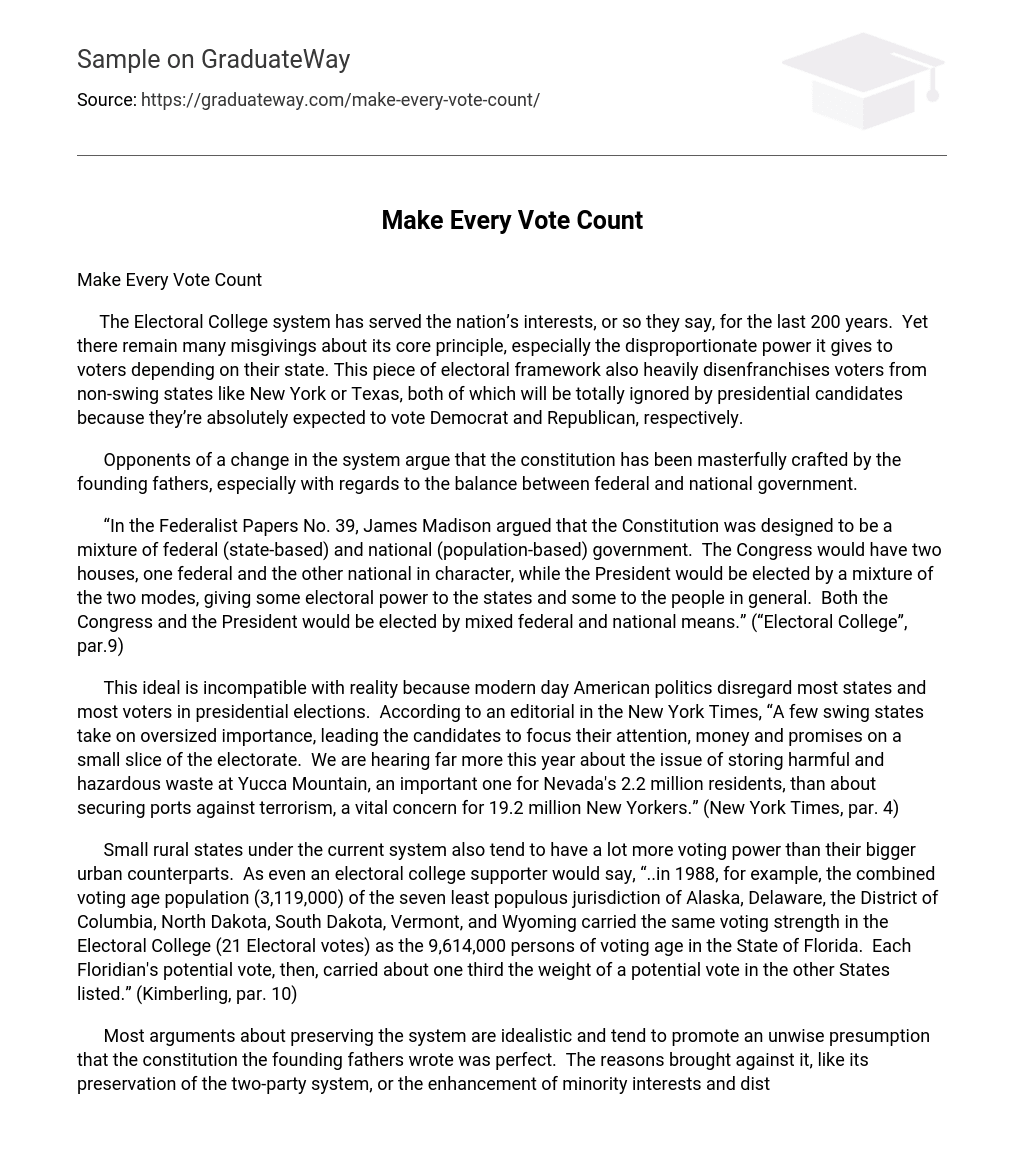The Electoral College system has served the nation’s interests, or so they say, for the last 200 years. Yet there remain many misgivings about its core principle, especially the disproportionate power it gives to voters depending on their state. This piece of electoral framework also heavily disenfranchises voters from non-swing states like New York or Texas, both of which will be totally ignored by presidential candidates because they’re absolutely expected to vote Democrat and Republican, respectively.
Opponents of a change in the system argue that the constitution has been masterfully crafted by the founding fathers, especially with regards to the balance between federal and national government.
“In the Federalist Papers No. 39, James Madison argued that the Constitution was designed to be a mixture of federal (state-based) and national (population-based) government. The Congress would have two houses, one federal and the other national in character, while the President would be elected by a mixture of the two modes, giving some electoral power to the states and some to the people in general. Both the Congress and the President would be elected by mixed federal and national means.” (“Electoral College”, par.9)
This ideal is incompatible with reality because modern day American politics disregard most states and most voters in presidential elections. According to an editorial in the New York Times, “A few swing states take on oversized importance, leading the candidates to focus their attention, money and promises on a small slice of the electorate. We are hearing far more this year about the issue of storing harmful and hazardous waste at Yucca Mountain, an important one for Nevada’s 2.2 million residents, than about securing ports against terrorism, a vital concern for 19.2 million New Yorkers.” (New York Times, par. 4)
Small rural states under the current system also tend to have a lot more voting power than their bigger urban counterparts. As even an electoral college supporter would say, “..in 1988, for example, the combined voting age population (3,119,000) of the seven least populous jurisdiction of Alaska, Delaware, the District of Columbia, North Dakota, South Dakota, Vermont, and Wyoming carried the same voting strength in the Electoral College (21 Electoral votes) as the 9,614,000 persons of voting age in the State of Florida. Each Floridian’s potential vote, then, carried about one third the weight of a potential vote in the other States listed.” (Kimberling, par. 10)
Most arguments about preserving the system are idealistic and tend to promote an unwise presumption that the constitution the founding fathers wrote was perfect. The reasons brought against it, like its preservation of the two-party system, or the enhancement of minority interests and distribution of popular support fail to truly support it. For example, the Electoral College might entertain the minority interests of a few homogenous states, but fail to include a much larger minority from a bigger state.
The constitution already has the mechanism for federal rule, in the form of the United States Senate. There aren’t enough compelling reasons to keep even the selection of the executive branch tied into this system of popular control. If I had the chance to amend the constitution of the United States of America, I would abolish the Electoral College, and elect the president and vice-president with a nationwide popular vote.
R E F E R E N C E S
“Electoral College.” Wikipedia: The Free Encyclopedia. 13 May 2008. 14 May 2008.
<http://en.wikipedia.org/wiki/United_States_Electoral_College>
Kimberling, William C. “The Pro’s and Con’s of the Electoral College System.” Jackson
County, MO Election Board. 2003. 14 May 2008. < http://uselectionatlas.org/
INFORMATION/electcollege_procon.php>
New York Times. “MAKING VOTES COUNT; Abolish the Electoral College”. New
York Times. 29 August 2004. 14 May 2008. <http://query.nytimes.com/gst/full
page.html?res=9407E0D81E3EF93AA1575BC0A9629C8B63>





